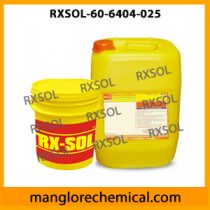Crystals or granules are dark purple with a metallic sheen, sometimes with a dark bronze-like appearance. Free-Flowing Grade is gray due to an additive. Potassium permanganate has a sweetish, astringent taste and is odorless.
Potassium Permagnate Also known as KMnO4, Condy’s Crystals and permanganate of potash. Its frequent uses is for various field like Purifying water, Creating an antiseptic solution, As an anti-fungal treatment for the hands and feet, As a cholera disinfectant, General disinfectant agent.
Application:
Potassium permanganate is used extensively in the water treatment industry. It is used as a regeneration chemical to remove iron and hydrogen sulfide (rotten egg smell) from well water via a “Manganese Greensand” Filter. “Pot-Perm” is also obtainable at pool supply stores and is used additionally to treat waste water. Historically it was used to disinfect drinking water.It currently finds application in the control of nuisance organisms such as Zebra mussels in fresh water collection and treatment systems.
Almost all applications of potassium permanganate exploit its oxidizing properties. As a strong oxidant that does not generate toxic byproducts, KMnO4 has many niche uses. One of the uses can be said to be as a fixative. This list is by no means the only applications that Potassium Permanganate is used for, but it covers some of the more common applications. The optimum condition under which it is to be used can be easily established through technical service evaluations or laboratory testing.
Water Treatment – Oxidizes iron, manganese, and hydrogensulfide; controls taste and odor; and is an alternate pre-oxidant for Disinfection By-Product (THMs and HAAs) control. Variety of disease causing organisms including bacteria, yeast, fungus, spores, and viruses growing in water. Drinking Water disinfectant can also be done by other common process process is to add 1-pound of calcium hypochlorite in granular form in to 10,000 gallons of drinking water. And Calcium Hypochlorite is widely available for use as swimming pool chlorine tablets or white powder that is much more stable than chlorine. And we have H2S vial (Bacteriological ) Kit use for checking microbiological quality of water. Water borne diseases like typhoid ,cholera, diarrhoea and jaundice and caused by polluted water supply.
Municipal Wastewater Treatment – Destroys hydrogen sulfide in wastewater and sludge. Improves sludge dewatering. Industrial Wastewater Treatment – Oxidizes hydrogen sulfide, phenols, iron, manganese, and many other organic and inorganic contaminants; resultant manganese dioxide aids in removing heavy metals.
Metal Surface Treatment – Conditions mill scale and smut to facilitate subsequent removal by acid pickling in wrought metals manufacturing and jet engine cleaning. Purification of Gases – Removes trace impurities of sulfur, arsine, phosphine, silane, borane, and sulfides from carbon dioxide and other industrial gases.
Mining and Metallurgical – Aids in separation of molybdenum from copper; removes impurities from zinc and cadmium; oxidizes flotation compounds. Removes iron and manganese from acid mine drainage.
Chemical manufacture and processing: Aids in synthesis of organic products for the chemical process and pharmaceutical industries.
Aquaculture (fish farming): Controls fish diseases and parasites, and detoxifies poisons while relieving oxygen depletion in fish ponds.
Air and gas purification: Removes pollutants from air and impurities from industrial gases, and quenches slag from foundry operations.
Fumigation of Poultry farms, Hatcheries, Mushroom farms, other culture environment and Operation theatres in Hospitals.
Dose:
Its Dose Depends according to application.
TYPICAL and Common use :
Ethylene absorbents extend storage time of bananas even at high temperatures. This effect can be exploited by packing bananas in polyethylene together with potassium permanganate. By removing ethylene by oxidation, the permanganate delays the ripening, increasing the fruit’s shelf life up to 4 weeks without the need for refrigeration.
USEFUL LINK to test Bacterial / germs growth in drinking water… http://www.rxmarine.com/H2S-vial-Bacteriological-Kit-manufacturer-supplier-test-kit
Note:
COMPATIBILITY INFORMATION
RXSOL™ potassium permanganate is compatible with many metals and synthetic materials. Natural rubbers and fibers are often incompatible. Solution pH and temperature are also important factors. The material must be compatible with either the acid or alkali also being used.
In neutral and alkaline solutions, RXSOL™ potassium permanganate is not corrosive to iron, mild steel, or stainless steel; however, chloride corrosion of metals may be accelerated when an oxidant such as RXSOL™ potassium permanganate is present in solution. Plastics such as polypropylene, polyvinyl chloride Type I (PVC I), epoxy resins, fiberglass reinforced plastic (FRP), Penton, Lucite, Viton A, and Hypalon are suitable. Teflon FEP and TFE, and Tefzel ETFE are best. Refer to Material Compatibility Chart.
Aluminum, zinc, copper, lead, and alloys containing these metals may be (slightly) affected by RXSOL™ potassium permanganate solutions. Actual studies should be made under the conditions in which the product will be used.
HANDLING AND STORAGE
Protect containers against physical damage. When handling potassium permanganate, respirators should be worn to avoid irritation of or damage to mucous membranes. Eye protection should also be worn when handling potassium permanganate as a solid or in solution. Potassium permanganate is stable and will keep indefinitely if stored in a cool, dry area in closed containers. Concrete floors are preferred to wooden decks. To clean up spills and leaks, follow the steps recommended in the MSDS. Be sure to use goggles, rubber gloves, and respirator when cleaning up a spill or leak.
Avoid contact with acids, peroxides, and all combustible organic or readily oxidizable materials including inorganic oxidizable materials and metal powders. With hydrochloric acid, chlorine gas is liberated. Potassium permanganate is not combustible, but will support combustion. It may decompose if exposed to intense heat. Fires may be controlled and extinguished by using large quantities of water. Refer to the MSDS for more information.
SHIPPING & PACKING : 5 Kgs, 1o Kgs, 25 Kgs, 50 Kgs Plastic Container






Reviews
There are no reviews yet.